Art Guides
15 Shows Across Europe to Look Forward to in 2017
The new year has exciting things in store.
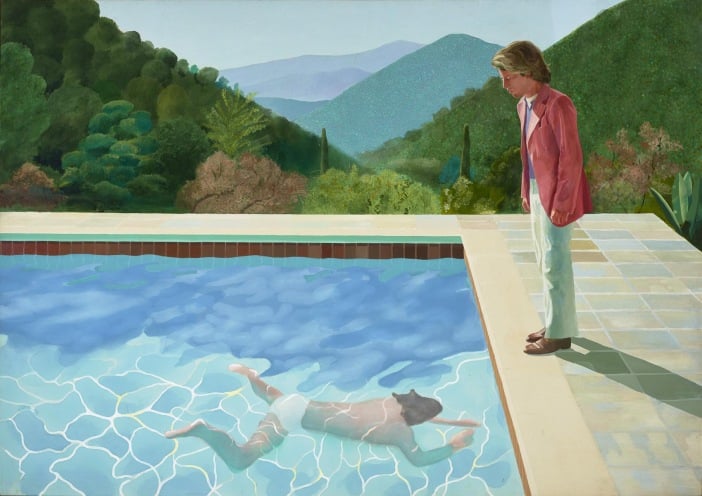
The new year has exciting things in store.

Artnet News

2016 was certainly a tumultuous year in global politics, and while some of us breathe a sigh of relief that it’s over, others are wondering what’s in store for 2017. For the art world, at least one thing’s for sure: European museums have more than a handful of great shows lined up for this year, to engage with—or distract from—current affairs.
Exhibitions run the gamut from 20th century masters of modernism to under-appreciated artists getting their due and the new contemporary canon taking over the savviest of institutions. So get your diaries ready and read on to find out our picks for this year’s top European museum shows to look forward to in 2017.
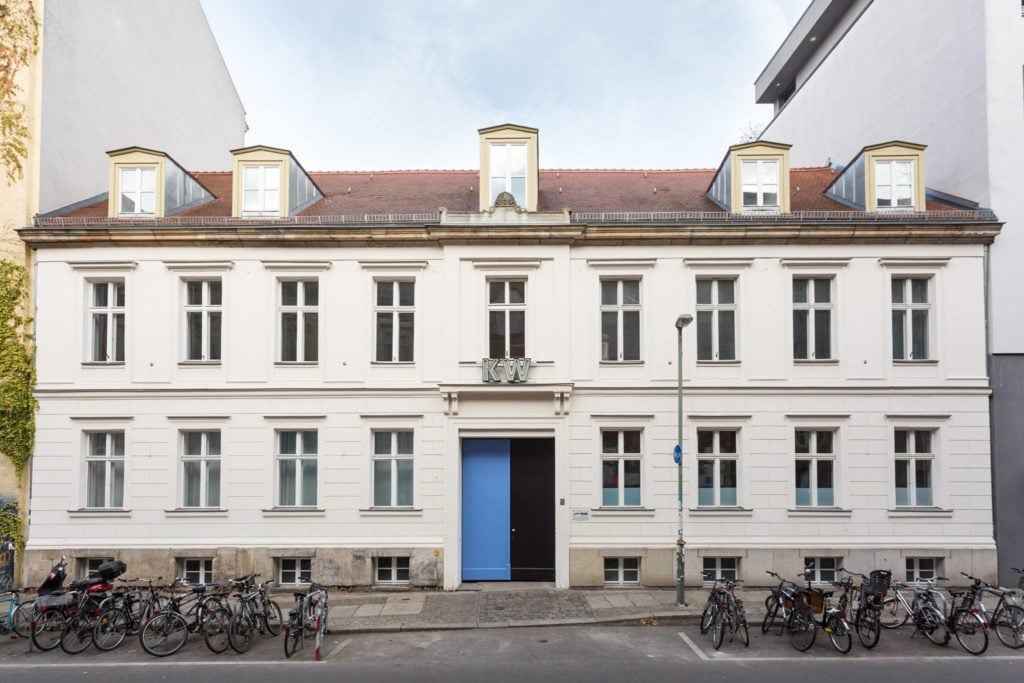
The exterior of KW Institute for Contemporary Art, featuring Philippe Van Snick, Dag/Nacht, (1984 – ongoing). Photo by Frank Sperling, courtesy Tatjana Pieters.
1. Ian Wilson at KW Institute for Contemporary Art, Berlin, January 20 – May 14
KW has been closed for renovations since the end of the 9th Berlin Biennale in September, but come 2017, the Berlin institution has a few milestones to celebrate: its 25th anniversary, and welcoming a new director, Krist Gruijthuijsen. The first exhibition will focus on South African conceptual artist Ian Wilson, whose practice is based in linguistics.
Wilson’s work will serve as inspiration for three further artists, the Norwegian Hanne Lippard, British Paul Elliman, and American Adam Pendleton, who will each create solo presentations based on Wilson’s explorations of language, communication, and interpersonal interaction.
Lippard’s “Flesh” will immerse the viewer in the sound of her voice from the top of a spiral staircase. Elliman’s “As You Said” will display old and new works that explore the boundaries of communication, using methods such as “letter-like objects” and “language-like vocal sounds.” Pendleton’s “shot him in the face” is simple yet imposing: a billboard-shaped wall cutting across an entire floor of K-W, covered in a black-and-white collage of archival work. In all, the exhibition is set to continue the institution’s conceptual, cerebral programming, which visitors will be able to enjoy for free during the weekend of January 20.
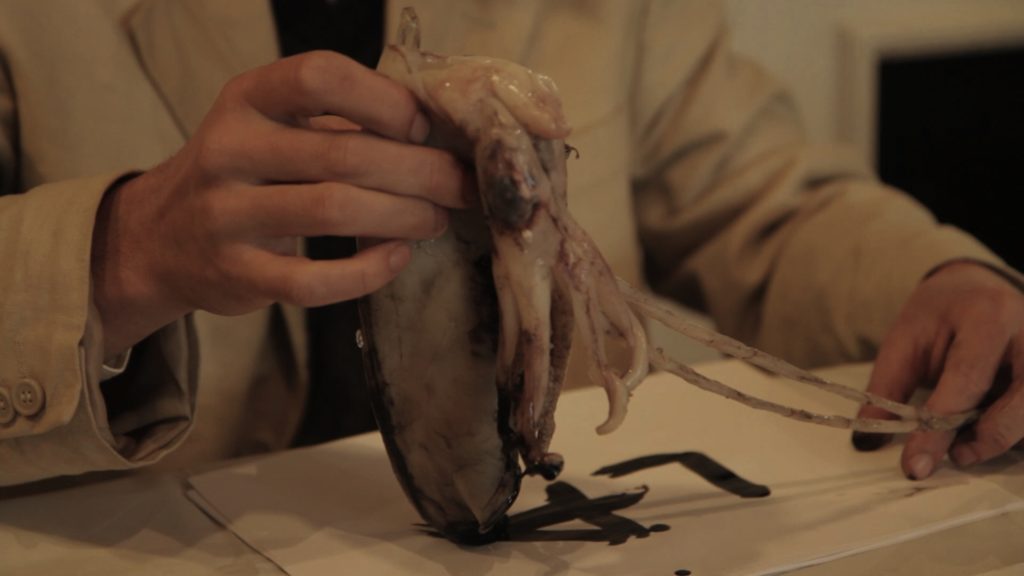
Film still from, The Wet Wet Wanderer, (2011). Courtesy Laure Prouvost.
2. Laure Prouvost at Witte de With, Rotterdam, January 27 – April 9
Laure Prouvost takes center stage at Witte de With for her contribution to “Para | Fictions“—a series of investigations by eight artists, commissioned to present their interpretation of the blurred divisions between art and literature.
The fifth artist to exhibit, Prouvost presents The Wet Wet Wanderer, a passage from her feature-length film The Wanderer (2011). In a style typical of the French artist, viewers will be drawn in as the installation sees the ground floor of the gallery transformed into a space which echoes the crazed tone of the film.
In the “wet sequence,” we follow a tortured writer; his mind unraveling, using a squid for a paintbrush, daubing paper with its ink. Flashing cuts from the film will be used alongside sculpture, video and sound, in a space laced with squid ink and vodka fountains. The 2013 Turner Prize-winner posits that “language is as slippery as a squid,” metamorphosing her work from film to sculpture.
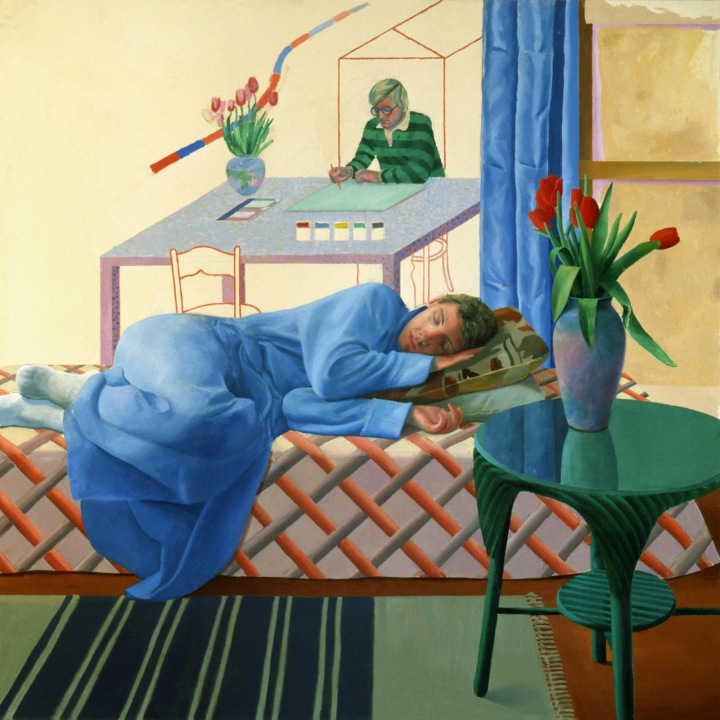
David Hockney, Model with Unfinished Self-Portrait. Private Collection ©David Hockney Courtesy Tate
3. “David Hockney” at Tate Britain, February 9 – May 29
Tate Britain kicks off the year with a blockbuster show: a comprehensive exhibition of David Hockney coinciding with the artist’s 80th birthday.
Featuring work from over six decades, the show will include painting, drawing, video, photography, and print, promising not only to provide a full retrospective on the British legend of Pop and Modern Art, but also include new, unseen paintings.
Visitors can expect the full Hockney experience complete with sun-soaked Californian vistas, as well as his much-loved drawings and prints alongside experimental photography. Billed by Tate as a once-in-a-lifetime show, this tracing of Hockney’s techniques and motifs is unmissable.
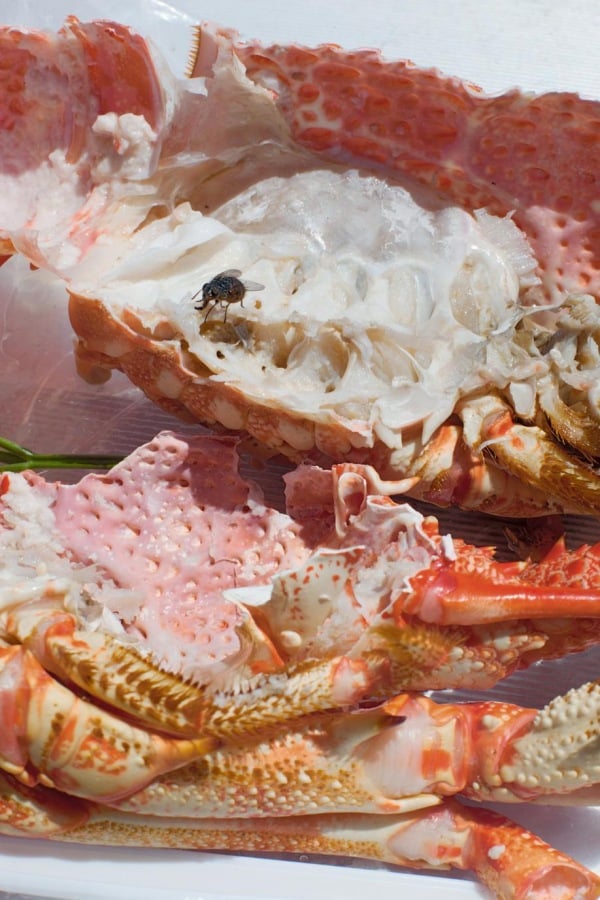
Wolfgang Tillmans, astro crusto, a (2012) ©Wolfgang Tillmans, Image courtesy Tate Modern.
4. “Wolfgang Tillmans” at the Tate Modern, London, February 15 – June 11
2017 is looking like a major year for Wolfgang Tillmans. The artist gets his first exhibition at the Tate, which will comprise portrait, landscape, still life, and abstract photographs, as well as video works, digital slide projections, publications, curatorial projects, and music, from the year 2003 to today.
In contrast to his early photographic works documenting youth culture, this exhibition will focus on his more than decade-long interest in politics, which began in 2003 with the invasion of Iraq, and continues to recent responses to Brexit, the refugee crisis, and the election of Donald Trump. In the Tate’s south tank, the artist will install an immersive installation of his music and video work, including live events that make full use of the acoustics of the industrial concrete space.
Coinciding with the end of the exhibition—and the beginning of Art Basel—is also a summer exhibition at the Fondation Beyeler in Basel, focused on Tillmans’s studio as a place of production and life. This marks the first major exhibition of photography at the foundation, but will also include works of film and sound. It will run from May 28 – October 1.
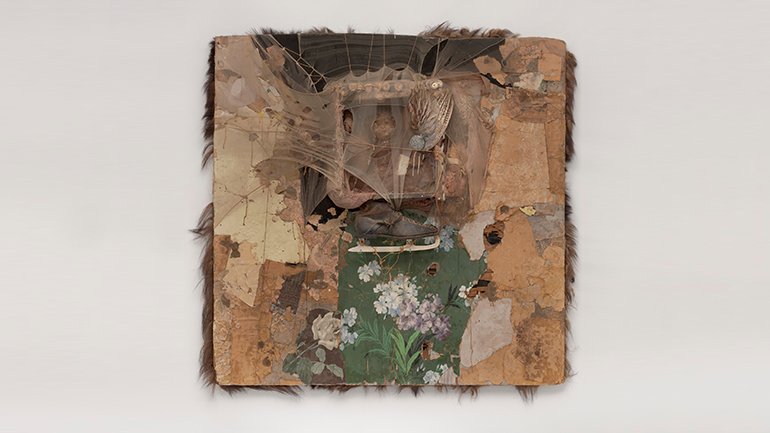
Bruce Conner, SPIDER LADY HOUSE, (1959). Oakland Museum of California Collection. Donation from the Collectors Gallery and the National Endowment for the Arts Image courtesy ©Bruce Conner, VEGAP, Madrid, 2016.
5. Bruce Conner, “It’s all True” at Museo Reina Sofia, Madrid, February 22 – May 22
“It’s all True,” Bruce Conner’s first major survey in 16 years, was one of the best exhibitions of the summer in New York. In February, after another leg at the San Francisco Museum of Modern Art, the show will cross the pond and land at Madrid’s Museo Reina Sofia, coinciding with the 36th edition of the fair ARCOMadrid.
The retrospective gathers over 250 works surveying the career of the visionary American artist, who started working on European-infused painting and assemblages before moving towards the realm of experimental film, a field in which he became one of the most revered international figures.
Early moving-image works like A movie (1958) or Breakaway (1966) evidence Conner’s curiosity about new technologies and knack for popular culture motifs. In later works, the artist’s confidence in using the medium and his growing political engagement resulted in masterpieces like Crossroads (1976), a terrifying yet fascinating study about the nuclear sublime, the horrible beauty created by the weapon of mass destruction. With a soundtrack by the experimental composers Patrick Gleeson and Terry Riley, Crossroads is Conner’s most enduring masterpiece, which, beside its many artistic merits, hasn’t lost any of it relevance today.
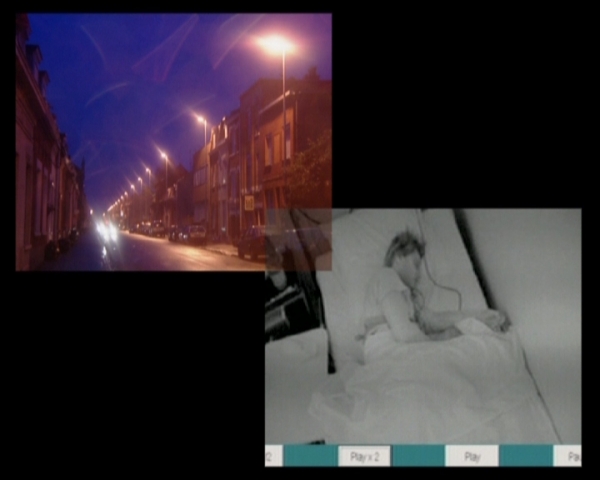
Harun Farocki, still from Counter Music (2004). Image courtesy Haus der Kunst.
6. Harun Farocki, “Counter Music” at Haus der Kunst, Munich, March 10 – May 28
“Gegen-Musik” is the original German title for the 2004 masterpiece “Counter Music” by the late filmmaker Harun Farocki. The two-channel video is, in the artist’s words, a “city film…but with different images.” Fragmented clips of industrial scenes, surveillance footage, and clips from a film by Soviet filmmaker Dziga Vertov come together to examine the changing shape of work, production, and consumption in the eyes of the artist at the time.
Farocki anticipated the trajectory of globalization that continues to contribute to the displacement and discontent of workers today, making Counter Music ever more pertinent in 2017.
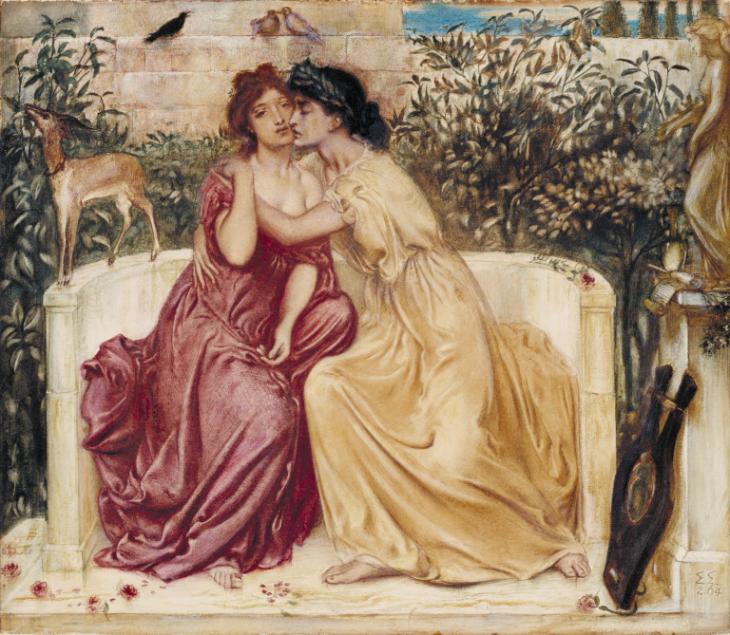
Simeon Solomon, Sappho and Erinna in a Garden at Mytilene, (1864). Courtesy Tate
7. “Queer British Art 1861-1967” at the Tate Britain, London, April 5 – October 1
It seems surreal that just 50 years ago, being gay was illegal in Britain (unfortunately, upwards of 70 countries still outlaw homosexual activity today). Queer British Art draws its historical parameters from 1861—the year the death penalty was abolished as punishment for sodomy—to 1967—the year the Sexual Offences Act was passed, decriminalizing male homosexual acts in England and Wales.
Works by artists such as John Singer Sargent, Dora Carrington, Duncan Grant, and David Hockney will highlight artists on the queer spectrum with a pleasantly surprising inclusivity (at least, on paper—It’s worth noting that artnet News did question in April whether the exhibition will disappointingly only focus on gay men), presenting non-cisheteronormative sexualities and gender identities, and the role that gay, lesbian, bisexual, transgender, and queer artists played in this period of British art history. From personal to political works, the show will also trace the history of LGBTQ rights through art and ephemera.
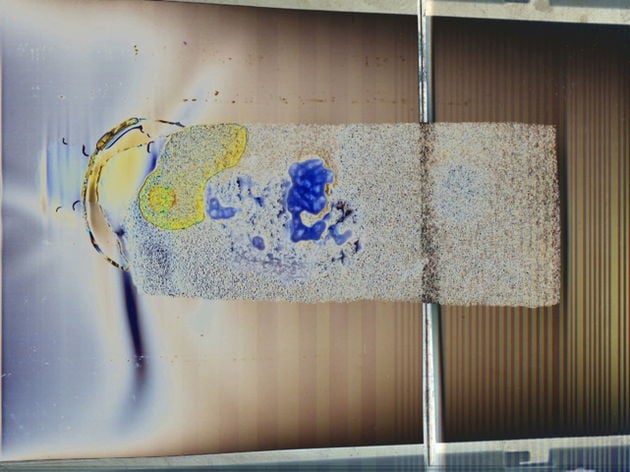
Trisha Donnelly, UNTITLED, (2012). Courtesy of the artist, Julia Stoschek Collection.
8. Trisha Donnelly at Museum Ludwig, Cologne, April 24 – July 30
As winner of the Museum Ludwig’s 2017 Wolfgang Hahn Prize, the American artist Trisha Donnelly gets a solo show at the Cologne institution, which also coincides with Art Cologne 2017. Donnelly’s radical approach is divisive, resisting easy categorization. Working in such diverse media as photography, drawing, sound, video, sculpture, performance, and installation, the conceptual artist does not allow explanatory texts to accompany her exhibitions. So it’s hard to say what’s in store for her solo show at Museum Ludwig, but it’s sure to be a highlight of the year.
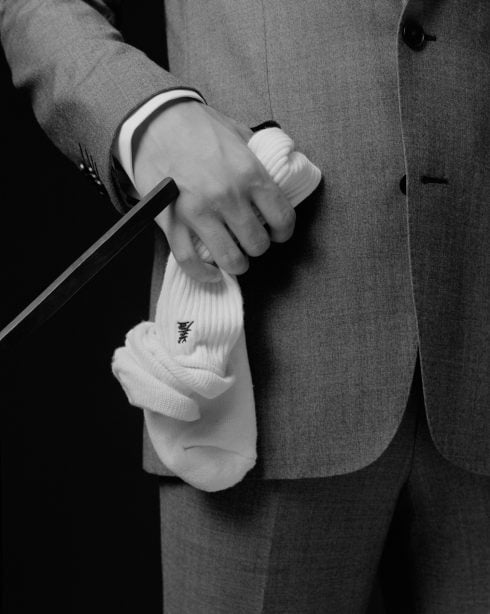
Yan Xing, The Story of Shame, (2015). Courtesy Kunstalle Basel
9. Yan Xing at Kunsthalle Basel, June 2 – August 20
Yan Xing’s show at Kunsthalle Basel opens just days before the 2017 edition of the Art Basel in Basel fair and takes the narrative device of a fictitious exhibition commissioned by a fictitious curator, and conceived by Xing. The sexual undertone of the show is governed by the fantasy life of the fictional curator of the show.
Xing’s work is often comprised of a construct created by him through a mix of autobiographical narrative, research, aesthetics, and fantasy. His intention is an investigation of how we create histories today, through literary theory, history, and art history. This is Xing’s first solo exhibition in Switzerland and, given its timing, is sure to gain him attention.
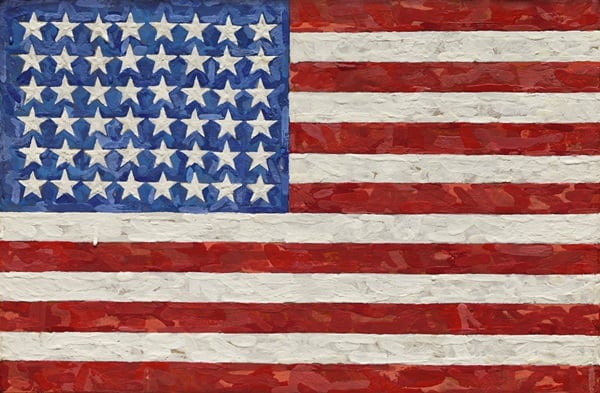
Jasper Johns, Flag, (1983). Courtesy of Sotheby’s New York.
10. Jasper Johns at the Royal Academy of Art, London, September 23 – December 10
Though the leaves will be falling, one of the RA’s most highly anticipated major exhibitions of the year will just be coming into fruition in Fall 2017. Jasper Johns, one of America’s biggest influencers on 20th century art, will be taking up the mantle in the Academy’s Main Gallery in a retrospective that will bring together his paintings, sculptures, prints, and drawings.
Often associated with the Neo-Dadaists, the exhibition will give focus to the different chapters spanning Johns’s career, recognizing his influence in other areas such as abstract expressionism, as well as his exploration of various mediums.
But to tide you over until the doors open in September, the Wildenstein Plattner Institute has announced that it will be publishing the artist’s catalogue raisonné in April. The weighty five-volume publication, produced in close collaboration with Johns over more than a decade, will document the artist’s oeuvre from 1954 to 2014.
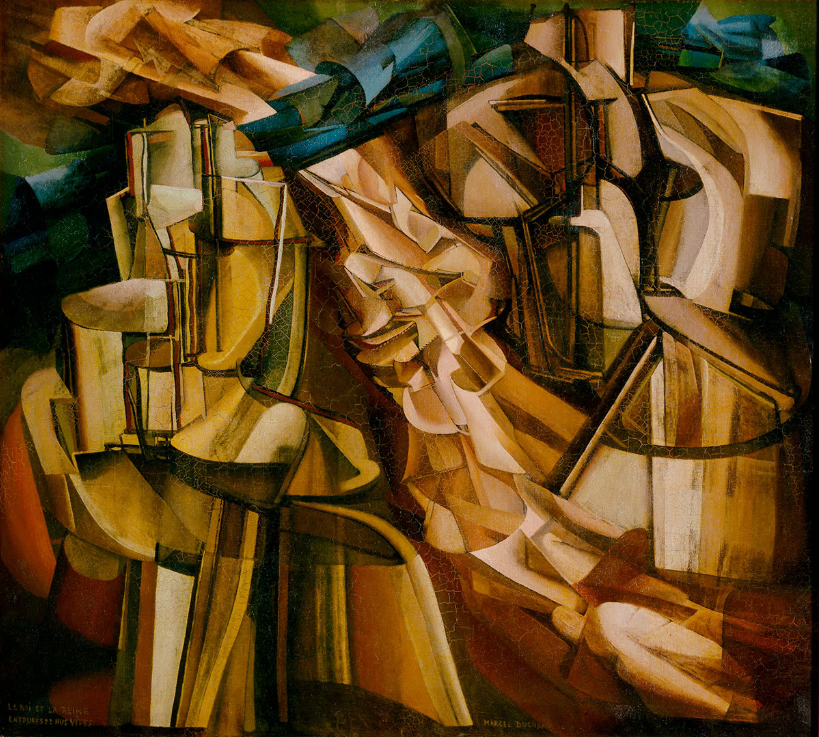
Marcel Duchamp, The King and Queen Surrounded by Swift Nudes, (1912). Image courtesy Philadelphia Museum of Art, The Louise and Walter Arensberg Collection, 1950-134-63a ©Succession Marcel Duchamp/ADAGP, Paris and DACS, London 2016.
11. “Dalí / Duchamp” at the Royal Academy of Arts, London, October 7 – January 3, 2018
Salvador Dalí and Marcel Duchamp are known as towering figures of Surrealism and Dada, respectively. This exhibition, organized by the RA with the Dali Museum in St. Petersburg, Florida, the Gala-Salvador Dali Foundation, and the Association Marcel Duchamp, will puts the two artists in conversation through their work, both familiar and lesser-known, repositioning both as fluid artists whose practices intersected more than the strict art historical canon may lead one to believe.
Paintings by the French visionary will hang alongside works by Dalí, with his Surrealist objects bearing striking similarities to Duchamp’s readymades. As the artists were in fact personal friends, correspondence between the two will also be on display, examining their shared interest in themes like eroticism, language, optics, and games.
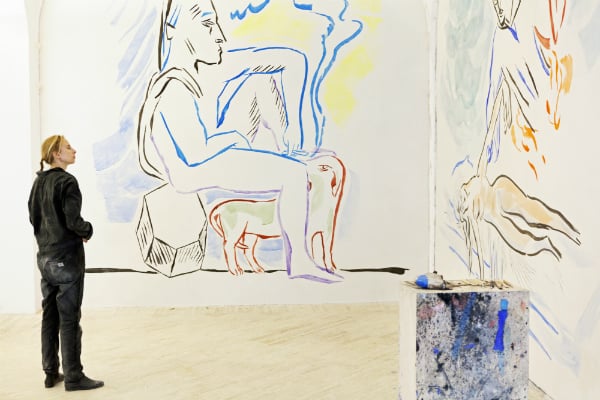
Camille Henrot working on Monday, Fondazione Memmo, May 2016. Photo courtesy Daniele Molajoli.
12. Camille Henrot, Carte Blanche at Palais de Tokyo, Paris, October 18 – January 7, 2018
The Palais de Toyko is giving Henrot free reign this fall, but the institution has been quiet so far about what exactly the artist will create inside its walls. However, from May to November 2016, the New York-based French artist presented Monday at the Fondazione Memmo in Rome: bronze sculptures and plaster frescoes created in homage to the first day of the work week.
The Fondazione lets on that Monday was the first part of a larger project that will be inspired by the remaining six days of the week, too, so it seems that Henrot will bring Tuesday through Sunday to Paris come October, under the curatorial direction of Daria de Beauvais.
The show follows Tino Sehgal’s carte blanche take-over of the contemporary art center in Fall 2016.
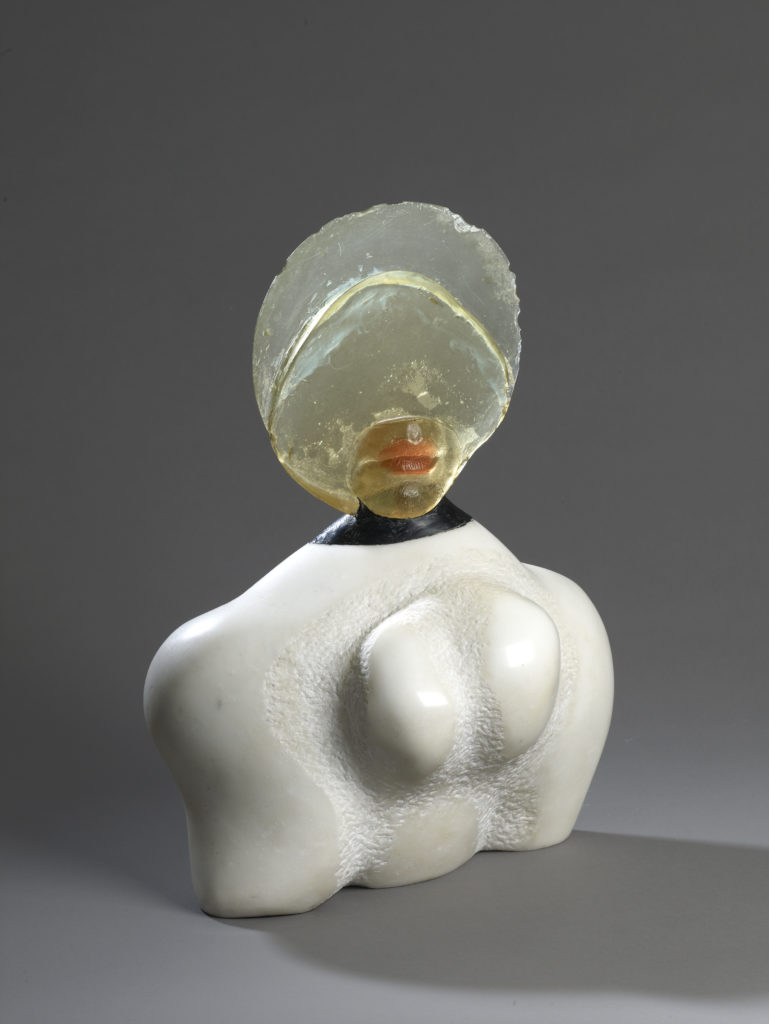
Alina Szapocznikow, Autoportrait I (1966). © ADAGP, Paris 2017. Courtesy the Estate of Alina Szapocznikow/Piotr Stanislawski/Galerie Loevenbruck, Paris. Photo: Fabrice Gousset.
13. Alina Szapocznikow at the Hepworth Wakefield, Yorkshire, October 20 – February 2018
Brits missed out on the 2011-2012 rediscovery of Polish artist Alina Szapocznikow, who was the subject of an influential retrospective curated by Elena Filipovic and Joanna Mytkowska that traveled across several museums, including WIELS in Brussels, the Museum of Modern Art in Warsaw, and New York’s MoMA. But thanks to the Hepworth Wakefield, which is positioning itself as a key institution for sculpture, the wait is finally over.
Gathering over 100 works, this will be first UK retrospective dedicated to the phenomenal Polish artist, who survived the Holocaust, moved to Paris, and went on to develop a unique sculptural language, in which casts of body parts, including her own, were turned into everyday items like lamps or dessert plates. These “awkward objects,” as she called them, will be displayed as part of a rich creative journey that began with figurative social sculpture during her youth, and culminated in a series of biographical, tumor-shaped pieces, which explored the disease that ended her life prematurely at the age of 43. Unmissable.
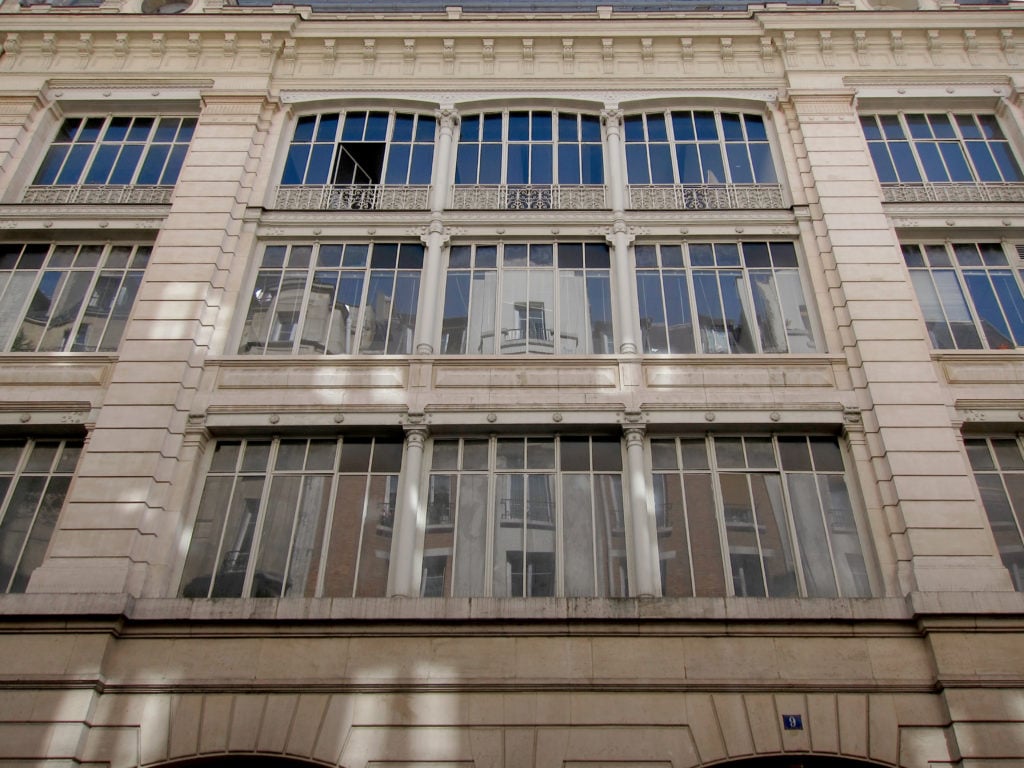
Fondation Lafayette before its upcoming refurbishment. Photo courtesy Fondation Lafayette
14. Lafayette Foundation Opens in Paris, Autumn 2017
The historic shopping destination Galeries Lafayette has long been a supporter of the arts and 2017 will see them open its own foundation in Paris. Having built anticipation through a series of pop-up exhibitions around the city featuring its young, cutting-edge collection, the Lafayette Foundation intends to use the space not just as an exhibition venue, but also to host studio spaces for young artists.
The stunning 19th century building on rue du Plâtre is currently being renovated by Rem Koolhaas architects who are responsible for Fondazione Prada in Milan. The board of directors for the foundation includes Chris Dercon, Martin Hatebur of Kunsthalle Basel, and Laurent Le Bon of Musée Picasso.
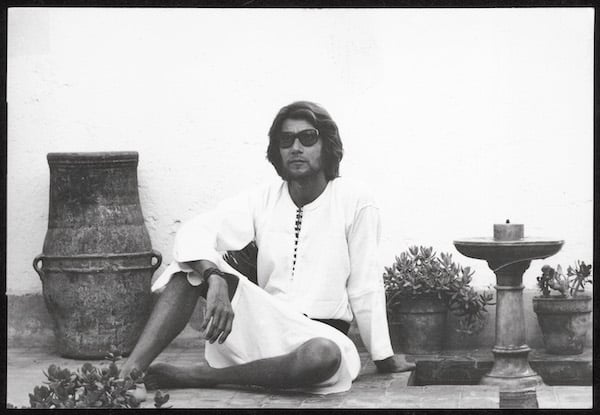
Yves Saint Laurent at Dar el Hanch. Photo ©Pierre Bergé
15. Yves Saint Laurent Museums to open in Paris and Marrakesh, Fall 2017
Fashion designer Yves Saint Laurent is credited with changing the way we dressed forever, conceptualizing women’s jeans and high street diffusion lines to name just two of his innovations, which encompassed both the creative and business sides of the fashion industry. And, given his deep attachment to both Paris and Marrakesh, it makes sense to have not just one but two museums devoted to his influential career in these locations.
The Parisian museum will be located at the Fondation Pierre Bergé-Yves Saint Laurent on the Avenue Marceau, where Saint Laurent created some of his most iconic collections, and will be filled with an ever-updated exhibition of his collections. Meanwhile, the museum in Marrakesh will host the Fondation Pierre Bergé-Yves Saint Laurent collection in an 8,000 square-meter space. Both spaces will open concurrently on an unconfirmed date in the Fall.